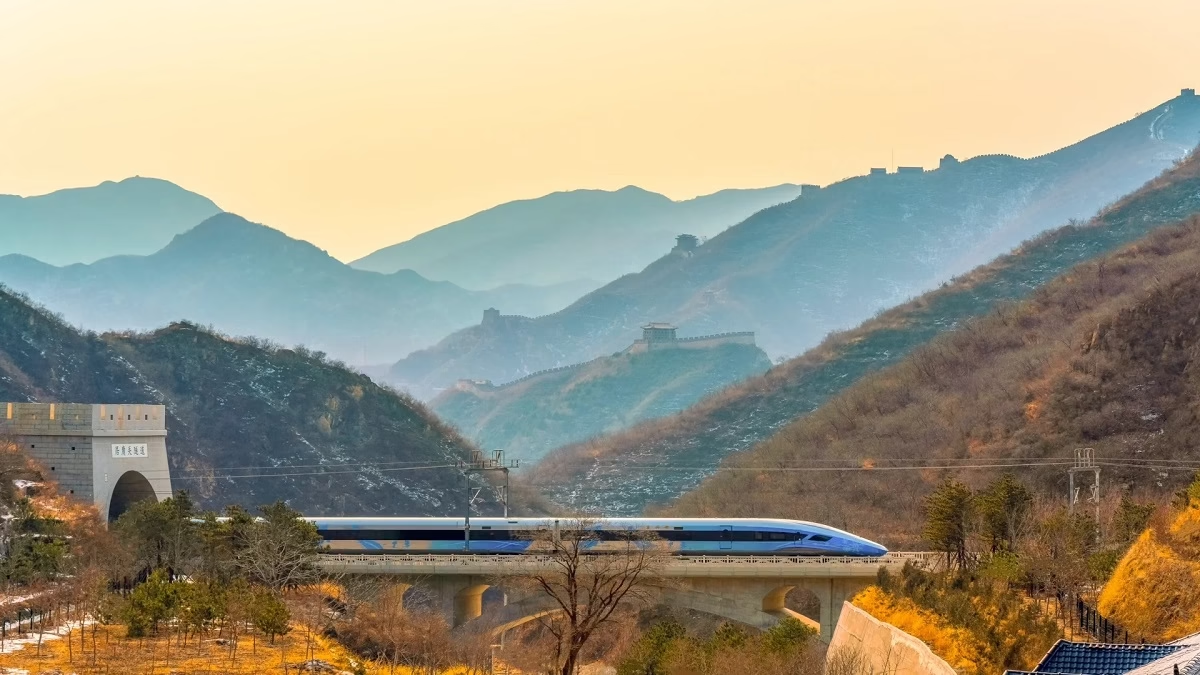Juyongguan, one of the three most famous passes on the Great Wall of China, has witnessed many pivotal moments in Chinese history. Situated in a strategic position, it served as an important military checkpoint during the Ming Dynasty. The Great Wall here is divided into two sections: the East Mountain Wall and the West Mountain Wall. While the East Mountain section is easier to traverse, the West Mountain section offers a more challenging hike with steep steps leading to the highest point.
Operating Hours and Ticket Prices
- Opening Hours:
- Daytime: 6:30 AM to 5:30 PM
- Nighttime: 6:30 PM to 10:00 PM
- Ticket Price: 40 CNY (same for both day and night sessions)
How to Get There
Public Transportation: Take bus 919 from Deshengmen bus station (德胜门公交站). Get off at the second parking lot, from where the entrance is near the 6th enemy tower. The left-hand side leads to the West Mountain route, while the right leads to the East Mountain.
Suburban Railway: Take the S2 line to Nankou Station (南口站), then transfer to buses 879, 919, or Chang 20 to reach Juyongguan Great Wall Station.
Self-Drive: Park at the 3rd parking lot near Yuntai, and enjoy a convenient entry to the Great Wall.
The Two Sides of Juyongguan: East vs. West Mountain Walls
Juyongguan is divided by a river, with two sections: the East Mountain Wall and the West Mountain Wall.

East Mountain Wall
This section is known for its gentler slopes and easier hiking paths, making it suitable for most visitors. The East Mountain section is home to the famous “Flower Sea Train,” which runs from mid-March to late April. The route is 0.5 to 1 hour long and is perfect for those who want to enjoy the beauty of the Great Wall without the physical strain of a steep climb.
West Mountain Wall
For those seeking a more challenging adventure, the West Mountain section is the place to go. Known for its steep stairs and rigorous hiking conditions, this part of the Wall is ideal for active travelers. The highest peak here, the Twelve Enemy Towers, offers some of the best panoramic views of the surrounding area. A hike here can take anywhere from 2 to 3 hours, depending on your pace. The trail from the 7th to the 8th enemy tower is the most difficult section, so it’s advisable to be in good physical shape.
The Full Circular Route
The complete circular route at Juyongguan spans around 5.5 kilometers and allows hikers to explore the entire Juyongguan section. This route is well-suited for enthusiasts of the Great Wall who want to take in its full grandeur. Although part of the Wall is closed for restoration (specifically from the 5th enemy tower to the Water Gate Tower), the rest of the path is accessible and provides an authentic experience of the Wall’s architectural and historical significance. The hike includes an elevation gain of 570 meters, making it a rewarding challenge for experienced hikers.
Must-See Attractions at Juyongguan
Flower Sea Train: During the spring months, you can experience the “Flower Sea Train” along the Flower Sea Trail. This seasonal event is a fantastic way to enjoy the vibrant blooms that surround the Great Wall.
Yuntai Tower: Built during the Yuan Dynasty, this tower is a historical landmark and was once a critical stop for travelers heading north. Inside, you can find carvings of the Four Heavenly Kings and the Buddha, as well as an ancient script known as “Phags-pa” that is now lost to history.
City God Temple: Known as the “Capital City God Temple,” this temple is considered the most important among all the City God Temples across China. It is a testament to the cultural and religious heritage of the region.
Juyong Duicui (Stacked Green): One of the “Eight Views of Yanjing,” this scenic spot highlights the lush green mountains surrounding the Wall. The rich greenery and steep cliffs create an impressive and peaceful atmosphere that adds to the Wall’s grandeur.
Why Choose Juyongguan Over Badaling?
Fewer Crowds: While Badaling is famous and often crowded, Juyongguan offers a quieter and more peaceful experience. You can explore the Wall at your own pace without the pressure of large crowds, making it an ideal choice for those seeking solitude.
Closer to Beijing: Juyongguan is only 14 kilometers away from Badaling, making it more accessible without the heavy traffic often found at Badaling. It’s a convenient option for those who want to experience the Great Wall without the hassle.
Better Value for Money: With a ticket price of just 40 CNY, Juyongguan offers excellent value compared to other sections of the Wall, where tickets can cost much more. Plus, parking is free, which adds to the overall savings.
Nighttime Experience: Juyongguan offers a unique opportunity to visit the Wall at night, with an atmosphere that is completely different from the daytime. For those who enjoy a more dramatic and peaceful setting, this is a must-try experience.

